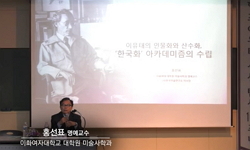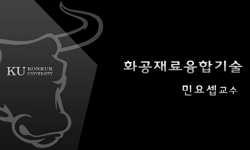공재 윤두서(恭齎 尹斗緖, 1668-1715)는 고산 윤선도(孤山 尹善道, 1587-1671)의 증손으로, 해남에서 태어나 한성으로 옮긴 후 조선 중기와 후기의 전환기였던 1700년대에 활동하였다. 당시 치열했...
http://chineseinput.net/에서 pinyin(병음)방식으로 중국어를 변환할 수 있습니다.
변환된 중국어를 복사하여 사용하시면 됩니다.
- 中文 을 입력하시려면 zhongwen을 입력하시고 space를누르시면됩니다.
- 北京 을 입력하시려면 beijing을 입력하시고 space를 누르시면 됩니다.
https://www.riss.kr/link?id=T11210006
- 저자
-
발행사항
서울 : 동국대학교 교육대학원, 2008
-
학위논문사항
학위논문(석사)-- 동국대학교 교육대학원 : 미술교육전공 미술교육 2008. 2
-
발행연도
2008
-
작성언어
한국어
- 주제어
-
DDC
759.11
-
발행국(도시)
서울
-
형태사항
ii, 45 p. ; 26 cm
-
일반주기명
지도교수: 김대열
- DOI식별코드
- 소장기관
-
0
상세조회 -
0
다운로드
부가정보
국문 초록 (Abstract)
공재 윤두서(恭齎 尹斗緖, 1668-1715)는 고산 윤선도(孤山 尹善道, 1587-1671)의 증손으로, 해남에서 태어나 한성으로 옮긴 후 조선 중기와 후기의 전환기였던 1700년대에 활동하였다. 당시 치열했던 당쟁의 회오리 속에서 개인적인 불행을 겪으며 일생을 보냈던 그는 평생 벼슬길에 오르지 않고 학문과 예술에 전념했으며, 45세에 고향으로 낙향하여 48세 되던 해에 세상을 떠났다.
공재는 시(詩) · 서(書) · 화(畵)를 비롯하여 천문(天文) · 지리(地理) · 수학(數學) · 병법(兵法) · 금석(金石) · 음악(音樂) · 기예(技藝)에도 두루 뛰어났으며, 서화에서도 그 뛰어난 재능을 발휘하였다. 특히 회화에 있어서는 겸재(謙齎) 정선(鄭敾) · 현재(玄齎) 심사정(沈師正)과 함께 조선 후기의 삼재(三齋)로 칭하였고 자신의 탁월한 회화관도 피력하고 있어 매우 주목된다. 그는 유고(遺稿) 『기졸(記拙)』에 조선왕조 초 · 중기 화가들에 대한 평(評)과 자론(自論)을 쓰고 있는데, 이것을 통하여 그의 회화관을 살펴볼 수 있다. 자신의 경험과 학식을 바탕으로 한 그의 회화관은 중국에서 옛날부터 다루어져 왔던 묵법(墨法)이나 필법(筆法)을 대조되는 어구로 설명하고 이러한 기법이 묘하게 합해져야 함은 물론, 거기에 전신(傳神)의 정신까지 부여되어야만 화(畵)의 도(道)를 이룰 수 있다고 하였다.
이처럼 형사(形似)와 사의(寫意)가 동시에 그림 속에 표출되어야 한다고 주장하는 그의 회화관은 문인화론을 바탕으로 직업화가의 기교까지를 강조한 독특한 것으로 여겨진다. 그는 이러한 회화관을 바탕으로 인물(人物) · 산수(山水) · 풍속(風俗) · 화조(花鳥) · 정물(情物)에 이르기까지 다양한 소재의 그림을 그렸고 인물화(人物畵)에 특히 뛰어난 재능을 발휘하였다. 그러한 사실주의적인 조형태도와 내면의 표출을 강조하고 회화관을 잘 반영하고 있는 대표적인 작품으로 <자화상(自畵像)>을 들 수 있다. <자화상>은 공재의 인물표현이 얼마나 사실적이면서 뛰어난가를 충분히 보여주는 작품이다.
본 논문에서는 인물화에 뛰어났던 공재의 작품에서 나타나는 인물표현을 연구하고자 한다. <자화상>과 더불어 <심득경 초상>은 공재의 사실적인 묘사력과 함께 인물의 정신성까지 담아내는 뛰어난 기량을 볼 수 있다. 또한 조선시대 풍속화의 시초이라 할 수 있는 공재의 <채애도>를 포함한 여러 풍속화 작품에서는 인물화에서와는 또 다른 인물표현을 볼 수 있다.
그동안 선행된 윤두서에 대한 연구는 아직 그리 많지 않은 실정으로 윤두서의 실학적 사상과 함께 각 작품을 주제별로 구분하고 전반적인 해석에 주력하고 있는 것이 대부분이다. 본 연구에서는 윤두서의 인물표현에 초점을 맞추어 먼저 공재의 작품을 인물화와 풍속화로 나누어 분류한 후 각 작품에서 등장하는 인물들의 표현에는 어떠한 특징과 차이가 있는지 알아보고자 한다.
공재는 대상을 정확하게 관찰하고 섬세하게 인물을 표현하였으며 서양화의 음영법까지 수용하면서 복합적인 화풍을 다양한 학문적 바탕을 배경으로 조선후기 화단의 새로운 경향을 예시하는 선구적인 면을 보여주고 있다. 자신의 학문과 실제 제작 경험을 통하여 독특한 회화관을 성립하게 된 것이다.
전통을 바탕으로 하면서 새로운 양식을 다양하게 수용하였던 그의 화풍은 아들 윤덕희와 손자 윤용에게 가법(家法)으로 전해졌으며 나아가서는 정약용에게까지 영향을 주게 된다.
이러한 그의 정확한 관찰과 사생을 통하여 대상의 진의(眞意)를 파악하려는 조형관은 대다수의 후학들에게도 많은 영향을 주었다.
다국어 초록 (Multilingual Abstract)
Gongjae Yun Doo-Seo (恭齎 尹斗緖, 1668-1715) was a great-grandson to Gosan Yun Seon-Do (孤山 尹善道, 1587-1671), and after being born in Haenam, he moved to Hanseong, where he performed activities in the 1700s, a turning point between the mi...
Gongjae Yun Doo-Seo (恭齎 尹斗緖, 1668-1715) was a great-grandson to Gosan Yun Seon-Do (孤山 尹善道, 1587-1671), and after being born in Haenam, he moved to Hanseong, where he performed activities in the 1700s, a turning point between the mid-Choseon period and the later Choseon period. While he spent all his life suffering from personal misfortunes all his life amid the fiercer whirlwind of party rivalry, he focused on his studies and the arts without entering into government service during his lifetime. Then, he returned to his hometown at the age of 45 and passed away at the age of 48.
Gongjae was an excellent student in astronomy· geography· mathematics· tactics· epigraphy· and music· and is noted for his accomplishments in these fields as well as for his poems· books· and paintings. In addition, he demonstrated his talent in his paintings and writings. Particularly in painting, he was known as one of the three genius artists along with Geonjae(謙齎) Jeong Seon(鄭敾) and Hyeonjae(玄齎) Sim Sa-Jeong(沈師正) in the later Choseon period, and he was highly celebrated regarding his excellent view of painting. In his post-script,『Gijol(記拙)』, he wrote criticism and) and self-criticism(自論) about painters in the early and mid-Choseon period, and this allows us to see his view of painting. His view of painting based on his experience and knowledge, explained the use of the Chinese ink technique(墨法) or calligraphy technique(筆法), which had been in use in China for a long time. He described the technique using contrary phrases, and said that those techniques should be in profound harmony and would achieve the craft of painting only when they were given the spirit conveying the soul (傳神).
Likewise, his view of painting, which insisted on the simultaneous expression of similarity in shape(形似) and personal emotion(寫意) in a picture, is deemed unique as it also stressed the techniques of professional painters based on the literary artist’s type of painting theory. Based on this view of painting, he created paintings with diverse objects throughout his characters, landscapes, folkways, flowers and birds, and still lives, and particularly demonstrated his remarkable talent in portraits. The representative work that emphasizes the formative attitude that came from realism and the expression inside and which reflects his view of painting well may be <Self-Portrait>. The <Self-Portrait> fully shows how the expression of character by Gongjae is realistic and surpasses that of many others.
This study aims to conduct research into the expression of characters shown in works of Gongjae, who was excellent in portrait work. Along with <Self-Portrait>, <Portrait of Sim Deuk-Gyeong> reveals Gongjae’s outstanding capacity to describe the spirit of character as well as a realistic description power. Also, in various genre paintings, including his <Gathering Wild Vegetables>, which may be the origin of genre painting in the Choseon period, he expressed characters differently from those in portraits.
There has been little research into Yun Doo-Seo, and even if there were more, the research has focused on the overall interpretation of each of his works along with his practical ideology by dividing his works by subject. This study aims to discover the features of and the differences in the expression of characters in each of Yun Doo-Seo’s works after classifying Gonjae’s works with portraits and genre painting by focusing on Yun Doo-Seo’s expression of characters.
Gongjae accurately observed an object and expressed its character elaborately. Also, he was a pioneer in that he forecasted a new trend in the painting circles of the later Choseon period by using a complicated painting style based on a broad spectrum of scientific backgrounds while accepting the gradation technique of Western painting. In that way, he established his unique view of painting through his studies and the actual experience of production.
His painting style, which accepted a variety of new styles based on tradition, was handed down to his son, Yun Deok-Hee, and his grandson, Yun Yong, as was the family tradition, and further influenced a grandson of his daughter, Jeong Yak-Yong.
His view of formative arts for identifying the true meaning of an object through accurate observation and significant sketching affected most young painters.
목차 (Table of Contents)
- Ⅰ. 서론 = 1
- Ⅱ. 윤두서의 시대적 배경과 생애 = 3
- 1. 시대적 배경 = 3
- 2. 윤두서의 생애 = 5
- Ⅲ. 윤두서의 작품 분석 = 8
- Ⅰ. 서론 = 1
- Ⅱ. 윤두서의 시대적 배경과 생애 = 3
- 1. 시대적 배경 = 3
- 2. 윤두서의 생애 = 5
- Ⅲ. 윤두서의 작품 분석 = 8
- 1. 작품경향 = 8
- 2. 인물화 = 12
- 1) 자화상(自畵像) = 15
- 2) 심득경 초상(沈得俓 肖像) = 20
- 3) 노승도(老僧圖) = 22
- 4) 소동파공진(蘇東坡公眞) = 23
- 5) 수하오수도(樹下午睡圖) = 24
- 3. 풍속화 = 25
- 1) 채애도(採艾圖) = 26
- 2) 수하이직도 = 27
- 3) 선차도(旋車圖) = 29
- 4) 석공도(石工圖) = 30
- Ⅳ. 결론 = 32
- 연보 = 34
- 參考文獻 = 35
- 圖版 = 37
- Abstract = 43










